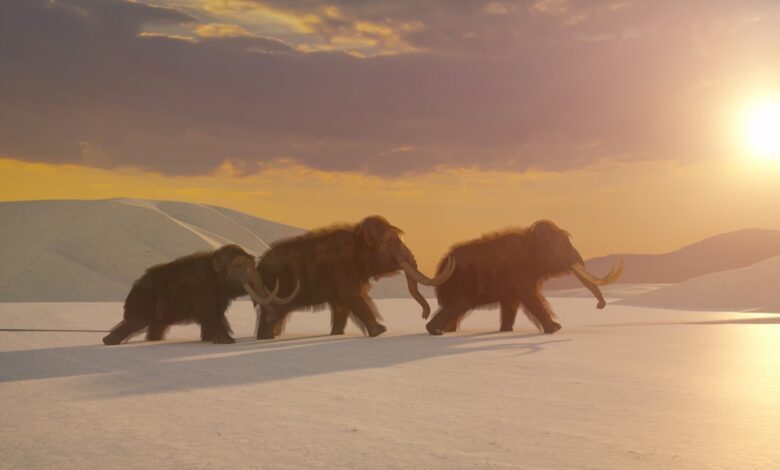
Increase scalability
Table of Contents
But the de-extinct species can fulfill their ecological role properly only if they survive in nature and grow enough population. Gaudry says that making this happen in the recovery of mammoths is a huge and outstanding task.
Researchers recently estimated that the vast area of Alaska’s North Slope could be a good host for 48,000 woolly mammoths.
Vincent Lynchevolutionary biologist and assistant professor at the University of Buffalo, says the mammoths’ ecological role may also include increasing the albedo effect (the reflection of light by snow into space and cooling the Earth). But for mammoths to do their job properly, they probably need to be restored across the Arctic.
“You can’t just put mammoths in Alaska and solve the permafrost problem,” Lynch adds. You have to spread them everywhere.”
Lynch believes that there would need to be hundreds of thousands of mammoths on Earth to see a significant impact on climate, and this could threaten living and endangered species.
The Asian and African elephants that Klaasel plans to use as hosts for raising mammoth calves are themselves endangered. An elephant carrying a mammoth fetus cannot give birth to its own children. In this way, this problem will reduce the population of elephants.
Another option is to place embryos in artificial wombs. But the technology is still not fully developed, Lynch says: “Imagine having hundreds or thousands of artificial wombs in warehouses producing genetically engineered mammoths; It’s like a horror and anti-utopian story.”
Unintended consequences
In addition to technical challenges, the restoration of extinct species can have serious consequences. One of the problems is that the regenerated animals may be sick because their genetic diversity is very limited.
To maintain a population, a sufficient number of organisms that are genetically different are needed so that the species is resistant to disease and harmful mutations.
Also, if large-scale mammoth recovery goes awry, who will be responsible? “Biomes have adapted to the absence of mammoths since they went extinct,” Lynch says. What happens if something bad happens?”
Other experts also say such concerns. Sophie Monzara“To see an impact, you have to have a large number of animals,” says ecologist and director of European restoration projects.
Species recovery may lead to conflict between humans and animals
The return of species to nature may also lead to conflicts between humans and wildlife. “In Africa, if you look at elephant conservation and reimportation, you see that there are conflicts,” says Monzara. In Kenya alone, conflicts between humans and elephants killed 200 people between 2010 and 2017. If scientists succeed in producing a viable population of mammoths, they will need to implement nationwide education programs for people to learn how to respond to mammoths.
The composition of regenerated populations is also important. “Brown bears (Ursus arctos) that were reintroduced from Slovenia to the Italian Alps in the 2000s are now growing, but the original population was found to be very aggressive. “The ecologists did not investigate properly and now these bears are attacking livestock and even humans.”
Schmitz also adds that there is no guarantee that the animals will remain at the same release site. For example, in 1995, gray wolves (Canis lupus) were re-entered Yellowstone National Park, but exceeded the park boundaries. “If you release the creatures into the wild, they will look for places that are more suitable for them, and those places may not be where you thought they would stay,” he says.
Although herbivores helped store carbon during the last ice age, Love Dallen says, “The recovery of megafauna may have a negative impact on climate change.” For example, mammoths may contribute to global warming by breaking down frozen soil and releasing methane in the hot season. “Also, like elephants in the African savannas, they may also reduce the amount of carbon stored in woody plants by eating plants.”








